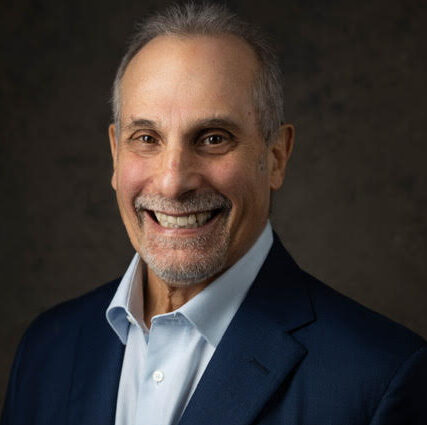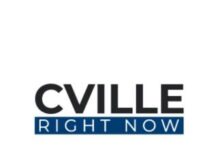
(By John Shomby) Several weeks ago, the southeast portion of the country was hit pretty hard by Hurricane Idalia. Florida, Georgia, South Carolina, and some parts of North Carolina were in her path. With all the rhetoric for the past year about the role of radio when disasters hit, I was curious to see how many stations would back that up.
Rather than go right to the larger markets, I decided to monitor a cluster of stations in a rural Georgia area that was getting hit by the storm – a six-station cluster with two AM News/Talk stations (as they described them) and four with adult music formats. What I heard was fully syndicated programming on all six. Not one with any remnant of live programming – not even a short drop-in about the storm.
I moved on to the larger markets in places that had been hit or that were about to be hit. I did hear updates but only in regular talk breaks in between normal music programming. Music sweeps and giveaways still happening, by the way.
I confess that I’m an “old school” radio guy at heart. Yes, I’m a strong believer in advanced technology, etc. but I really believe that radio is still a crucial player in the communications world. I came up in the business when EVERYTHING was live and local and there were no questions about that. When I heard those stations that week, I remembered my days, not long ago, in Virginia Beach when we would broadcast wall-to-wall info when hurricanes would hit. It was what our audience expected from us, and we never wanted to let them down.
Where is that feeling now? I will say that I heard ONE station going wall-to-wall but the rest, as I mentioned, did not deviate from regular programming. The non-participants far outweighed the participants. We are spending all this time trying to convince our government representatives and automakers of the benefits radio brings to the table and then, we don’t put our “money where our mouth is”. We wonder why the younger generation uses radio less than any other age group and we wonder why all ages aren’t depending on radio as much as they had in the past.
It was drilled into my head from my rookie days to recently that, if the listeners expect something from your station, you better come through or they will look elsewhere – and apparently, in some cases, they have been. Yes, 82% of the population still listens to radio at some point in a week but that is down from 92% as we ended the last decade. We must be concerned about these eroding numbers.
I do realize we are talking about much smaller staffs than even ten years ago. There is not enough time or manpower to address various local situations as a big storm.
Several quick ways to handle disasters with a small staff:
- Create a partnership with a local TV station where even a simulcast of disaster coverage would be better than running your syndicated programming.
- Some stations already do this – pool your resources within the cluster or in nearby company markets. Have as many as possible pitch in with coverage.
- Work online through your website and socials to update everyone as quickly and as often as possible.
Radio’s most treasured connection is with its community, so I am challenging the higher management of clusters and broadcast companies to consider the future of radio, especially in your station’s market. If the listeners know we are there for them, especially when they need US the most, we still can overcome some of the other issues.
Based in Nashville, TN, John Shomby is the owner and CEO of Country’s Radio Coach. He is focused on coaching and mentoring artists, radio programmers, and on-air talent to help them grow and develop inside the radio station and the industry. Reach John at [email protected] and 757-323-1460. Read John’s Radio Ink archives here.






John, we begin on 9/11 when a plane hit The World Trade Center in New York City. We had just moved into a new building and much of our infrastructure (including TV cable and receivers) wasn’t working. My traffic reporter was in a different building and told me she was hearing about a “small plane” hitting The World Trade Center. I did have access to ABC radio and punched it up to hear a live report from a reporter “on the ground” as the 2nd plane hit. Not a small plane at all. I immediately pulled up our full-service AM station and let it go. I didn’t need our RVP to tell me wha to do. Next, we’ll take you back to 2003 when devastating wild fires hit San Diego. A Sunday morning. Most of the local media was off for the weekend, but we did see one station covering the eastern part of the county being swallowed up by a raging inferno. Again, I pulled up our full-service AM station for live coverage which lasted for the next 3 days on all of our stations. (We had 15 of them operating from our building at the time.) It may have been redundant, but despite the massive loss of property, the loss of life was minimal. That’s radio’s job-or at least was. Today there’s an app for that but as people in Hawaii learned, the internet is only good if it’s running.
Plenty of opportunity here. “Disaster insurance”? Local broadcasters can pool some resources into developing a plan to cover disasters collectively and have it funded by an insurance policy. “Collective coverage” with local broadcasters and TV entities -where it’s cross promoted. “In the car? Follow our coverage on WXXX”. (Radio would reciprocate on promoting TV coverage.) In the northeast we had contingency plans where advertisers would run spots during snow emergencies promoting shovels, salt, snow blowers, other services.
In Cincinnati we had “Operation Storm Watch” -with an electronic sounder that would run every 15 seconds if a tornado was on the ground. The sound ran even during music with continued coverage if needed.
Trouble is (as we’ve pointed out ad nauseam) that those in charge are looking at (and sweating) tomorrow’s revenue numbers when, instead, they can insure the future of their product by investing things that will bring people back to their stations. We know how to fix it, but most of us are powerless.
Still time to rescue radio
Basically, I agree with you John. But you have to realize, with the huge growth in the number of radio stations serving even small markets plus the big guns with ever larger overlapping coverage areas, it makes for a lot of redundancy. There’s no point in everyone covering the same events at the same time. Some folks really want to hear music and not wall to wall coverage. Some folks want the coverage and should be able to get it. Unfortunately, the expansion of the FM band greatly watered down the available revenue stream making it tougher to maintain the size of payrolls required to provide fully staffed newsrooms.